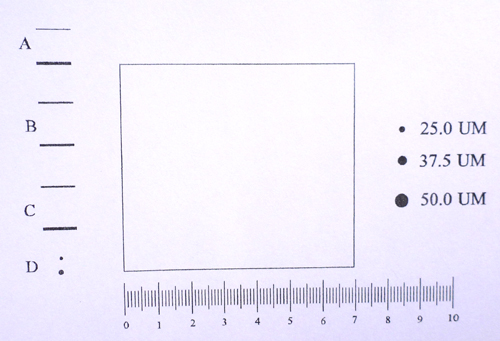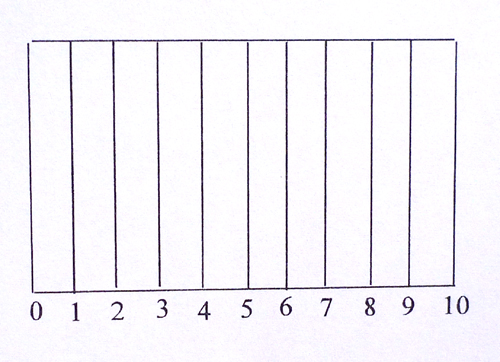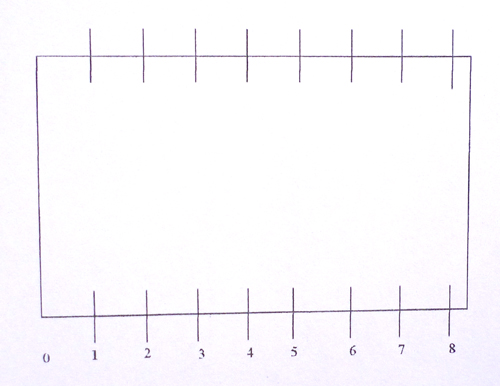ASTM E-45 Inclusion Content of Steel
ASTM Method E-45 is the standard test method for determining the inclusion content of steel. Methods A, B, C, D and E cover a number of recognized procedures for determining the nonmetallic inclusion content of wrought steel. Macroscopic methods include macrotech, fracture, step-down, and magnetic particle tests. Microscopic methods include five generally accepted systems of examination. In these microscope methods, inclusions are assigned to a category based on similarities in morphology, and not necessarily on their chemical identity.

The KR-843 reticle shown above is used for ASTM E-45 Methods A, D and E.
Most metallic materials have some form of inclusion content. In steels, for example, nonmetallic inclusions exist in the form of compounds such as manganese sulphide. Inclusion counts are performed to assess their type, shape, quantity and distribution (ASTM E45), rather than chemical composition. Although compositions are not identified, Microscopic methods place inclusions into one of several composition-related categories including: sulfides, oxides, and silicatesthe last as a type of oxide.

The KR-852 reticle shown above is an ASTM E-45 Method B overlay grid.

The KR-853 reticle shown above is used for ASTM Method C.
